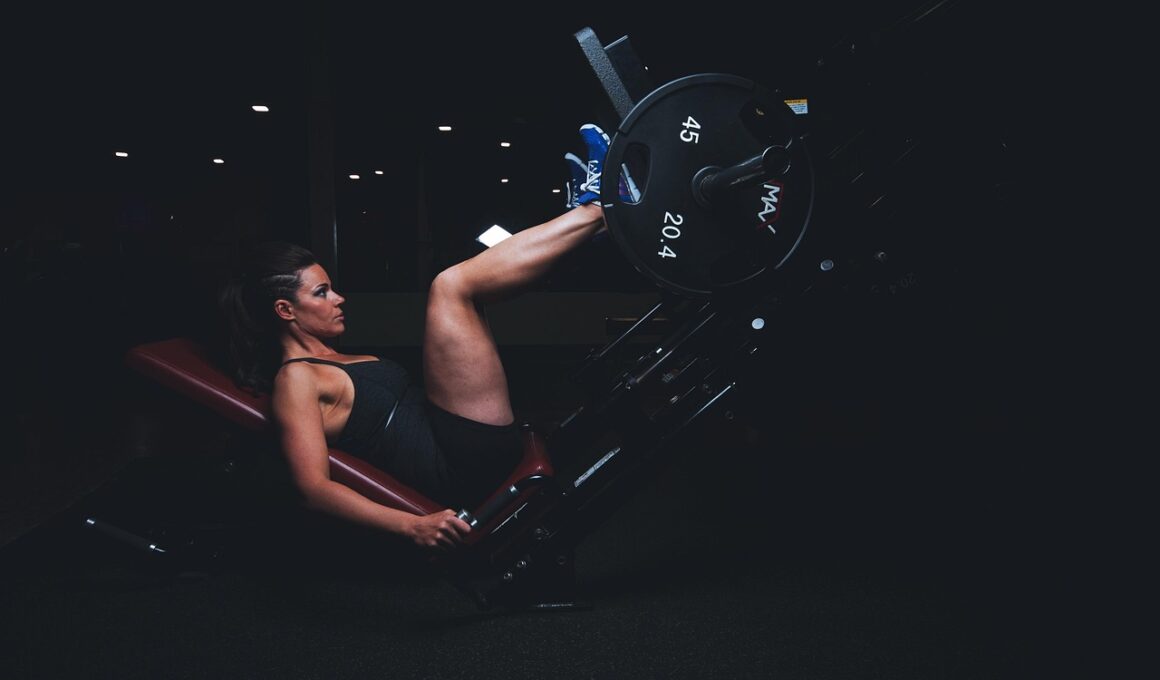Essential Warm-up Exercises for Calf Strengthening
Calf strengthening is crucial for enhancing lower body performance and preventing injuries. A proper warm-up is essential before engaging in any physical activity. One effective warm-up exercise is the standing calf raise, which targets the calves directly. To perform this, stand with your feet shoulder-width apart, rise onto your toes, and hold for a moment before lowering. Another great exercise is the seated calf raise. Sit on a sturdy chair with your feet flat on the floor. Raise your heels while pressing down with your toes. This can be performed with weights for added difficulty. Additionally, wall stretches are beneficial for warming up the calves; lean against a wall, one foot forward and the other back, pushing the back heel into the floor. Aim to hold this stretch for at least 20 seconds. Other options include ankle circles, which improve flexibility, and foam rolling for muscle tension relief. Incorporate these exercises into your warm-up routine to maximize your calf strengthening exercises. By doing so, you enhance your overall athletic performance and maintain the health of your leg muscles.
Another effective warm-up technique involves dynamic stretches targeting the calves. Start with leg swings, where you swing one leg forward and backward, keeping the movement controlled. This not only warms up the calves but also engages the hips. Follow this with high knees, where you march in place, bringing your knees up toward your chest. This helps activate the calf muscles while also increasing your heart rate. Also consider toe walks, which require you to walk across a designated space on your tiptoes. This exercise strengthens the calves through continuous engagement. For a comprehensive warm-up, mix these exercises into a circuit routine. Plan to do each for around 30 seconds while remaining mindful of your form. Remember that a gradual increase in movement intensity is vital for effective warm-ups. Using a stop-watch can assist in managing the durations effectively. By integrating such dynamic stretches and movements into your warm-up, you ensure that your calves are ready for any sporty challenge ahead. This approach significantly reduces the risk of calf strains and enhances your performance during exercises.
Performing warm-up exercises specifically targeting the calves not only enhances muscle strength but also contributes to better overall fitness. Consider including jump rope routines that focus on calf engagement. As you skip, your calves alternate between contraction and relaxation, warming them effectively. You might also find calf pumps beneficial; stand on a curb, allowing your heels to drop slightly below the level of the surface. Raising yourself up and down strengthens the muscles while providing a solid stretch. To confirm that you’re engaging the right muscles, check your form in a mirror or ask a partner. Combining flexibility work, like calf stretches, is also essential; they improve your range of motion. Additionally, calf walks on an incline can offer substantial benefits – look for a hill or treadmill with an incline setting, which will require extra effort from the calf muscles. As you progress through these varied warm-up strategies, pay close attention to your body’s feedback. Always prioritize safety and listen to your body’s signals throughout your warm-up exercises. Keeping your calves well prepped contributes to more effective workouts overall.
Implementing a consistent warm-up routine involving calf strengthening exercises is non-negotiable for athletes. An effective way to scale this practice is through conscientious progression. Start your calf conditioning by assessing your baseline stability and strength. Utilize a mirror to ensure that your techniques are accurate; improper form can lead to injuries. As your calf muscles grow stronger, gradually increase the intensity, repetitions, and variations of your stretches. For example, as you become comfortable with standing calf raises, add weights for further growth. Also try incorporating balance challenges, like standing on one leg while performing calf raises. Moving forward, you might engage in plyometric exercises like box jumps, which encourage explosive calf strength. As these activities push you to your limits, always remain mindful of maintaining proper alignment. Each exercise’s effect optimizes as you listen to your body throughout the routine. Playing around with tempo, such as slowing down on the lowering phase, can augment your strength results effectively. Careful attention to warm-up depth and creativity keeps your training stimulating while offering the best calf enhancements.
Caring for your calves post-exercise is just as important as your warm-up. Stretching should be performed after your calf workouts to avoid stiffness and promote flexibility. Incorporate static stretches, such as sitting with legs extended, reaching for your toes, and holding for at least 20-30 seconds. Another effective cool-down exercise is the downward dog; this yoga pose stretches both the calves and the hamstrings. Self-myofascial release techniques, using foam rollers or massage balls, can also be effective in relieving muscle tension. Focus on rolling out the calves after vigorous workouts. Look for tight spots and spend additional time exploring these areas. Additionally, hydration plays a significant role in muscle recovery; ensure to replenish fluids lost during your session. Nutritionally, including protein-rich foods will support muscle repair. Finally, integrate rest days to give your calves time to recover and rebuild strength. These practices ensure that your muscles stay functional and reduce the likelihood of injuries. Balancing strengthening exercises with proper post-session care leads to well-rounded calf health.
When executing warm-up exercises designed for calf strengthening, tracking your progress is vital. Keeping a journal allows you to note your calf exercises, repetitions, and any changes in flexibility or strength. You can use applications available on smartphones to log your workouts. Gradually increasing your exercise intensity should be a focus; this might include adding weights to your standing calf raises or increasing the duration of your stretches. Additionally, consider setting specific goals for calf strength improvements, such as performing a certain number of calf raises without losing form. Tracking daily routines revives your motivation across weeks or months, reinforcing the consistency needed for muscle gains. Furthermore, consider sharing your goals with a workout buddy; they can help provide accountability. Participating in classes or group activities targeting calf muscles could add a social element to your conditioning. The more you immerse yourself in the process of calf strengthening, the greater enjoyment you may derive from your workouts. Make adaptations as necessary so the routine remains engaging and enjoyable for you while focusing on strengthening the calves.
In conclusion, engaging in essential warm-up exercises for calf strengthening is crucial to your overall athletic success. As you implement the various strategies outlined above, remember to emphasize proper technique and consistency. Adapt each exercise to your fitness level, progressively challenging yourself as your calf strength grows. Beyond injury prevention, a well-rounded warm-up routine enhances your performance in all physical endeavors. Alongside consistent training, tailor post-exercise stretches and recovery practices to ensure longevity in your calf health. Through reflective monitoring of your routines, adapt and grow as you develop a deeper connection with your fitness journey. The commitment to your calf strengthening exercises will translate into tangible results and increased confidence in your physical abilities. By synthesizing all these methods, you create a powerful foundation for success, whether participating in sports or simply maintaining an active lifestyle. Engage persistently and witness how calf muscles become stronger, leading to improved agility and resilience during workouts. Embrace these warm-up tactics, fostering a more robust lower body routine that supports your broader fitness goals.
Overall, investing time in warm-up exercises enhances calf strength, which is essential for everyday activities and athletic performance alike. By adopting various techniques such as calf raises, stretches, and dynamic movements, you prepare your muscles for exertion effectively. Just remember that each movement shapes your overall fitness journey, reinforcing the significance of warm-ups before any rigorous activities. Focus on gradual progression and prioritize body awareness throughout these exercises to guarantee optimal outcomes. As your calves strengthen, consider diversifying your warm-up to include different techniques to maintain engagement and challenge various muscle groups. Consistent practice yields remarkable results over time. As a reminder, perform post-exercise care such as stretching and hydration to complement your strengthening efforts. This holistic approach encourages robust calf health, facilitating your active lifestyle. From athletic pursuits to daily mobility, your calf strength plays a pivotal role in enabling you to perform efficiently. Ultimately, being proactive in maintaining your muscular health fosters not just physical health but boosts your overall confidence, allowing you to embrace challenges head-on with assurance.


